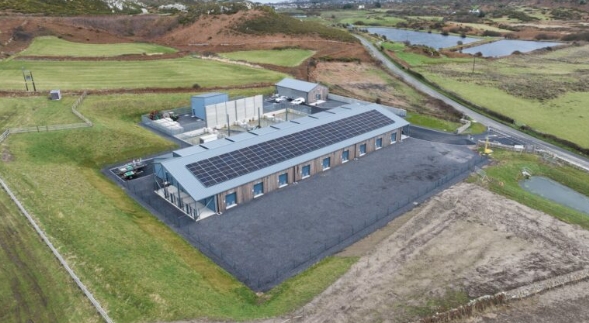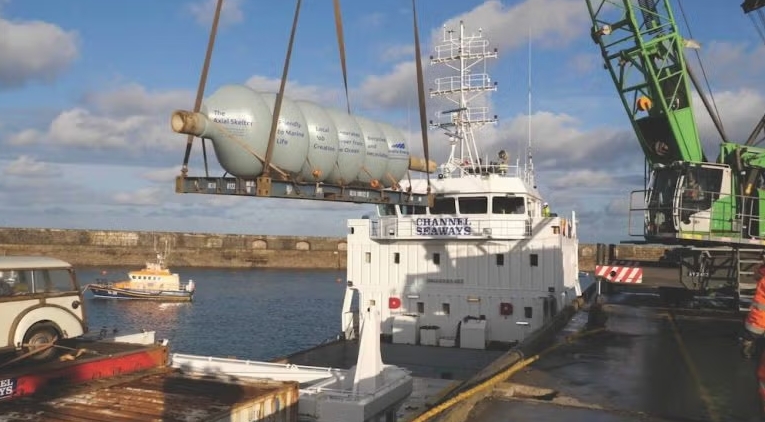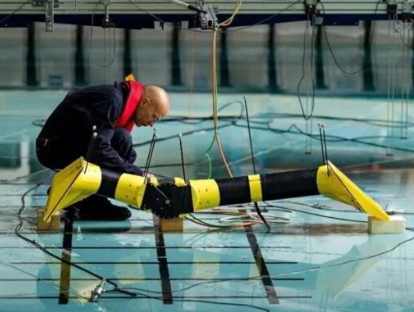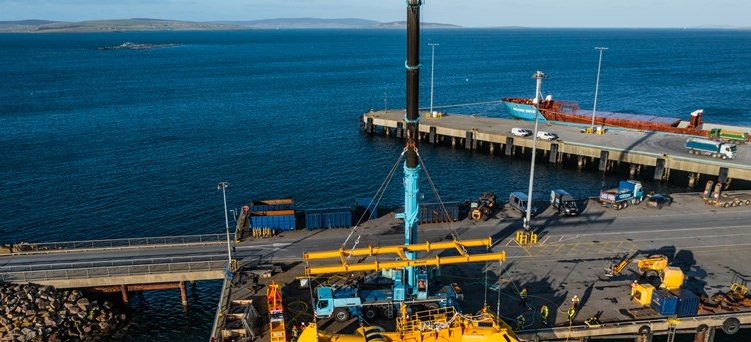
A multibillion-pound tidal barrage connecting Liverpool and the Wirral peninsula has been announced as the preferred option for the Mersey Tidal Power project, which hopes to generate clean power from the tidal stretch of the river.
The latest plans for the high profile project - which would become the world's largest tidal power scheme if built - were unveiled late last week, setting out how the barrage could generate clean, predictable energy for 120 years.
The developers also highlighted how the project would open up the possibility of a first-ever cycling and pedestrian route across the Mersey between Liverpool and Wirral and provide a defence against future flooding risks.
Built as a barrier between the sea and a tidal basin, the dam-like structure would be fitted turbines to generate power from the change in tide levels and is seen by many as a cheaper alternative to building a tidal lagoon.
The project has been backed by Liverpool City Region mayor Steve Rotheram, who said: "The River Mersey has been the lifeblood of our region's fortunes for centuries - and it has an even more vital role to play in our future. Where our area was once a leader in the first Industrial Revolution, we now have an opportunity to seize our chance to become a leader in the Green Industrial Revolution.
"Mersey Tidal Power has the potential to generate clean, predictable energy for 120 years, create thousands of green jobs and apprenticeships - and all but seal our area's status as Britain's Renewable Energy Coast."
He added that beyond the banks of the River Mersey, the project would become a national infrastructure asset that "could position the UK as a global leader in the renewables race and help to turbocharge our net zero ambitions".
However, the project is likely to face significant opposition from some conservation groups. Cheshire Wildlife Trust have warned that such a development "has the potential to cause significant environmental damage", highlighting the impact on the habitat of tens of thousands of birds.
And the plans will face questions over the level of subsidy the project would require from government to reach a final investment decision. Previous plans to build a major tidal energy project in the Severn Estuary stalled when the government baulked over the cost of the long term power purchase contracts that would have underpinned the project
Rotheram said the Mayor's Office was "under no illusions" about the "significant technical and financial challenges" the project would need to overcome. But he insisted the new plans "mark a huge step on our journey to bringing Mersey Tidal Power to life".
"Quite simply, the case for tidal has never been clearer - both for our economy and our planet," he added.
The multibillion-pound scheme will now begin the process of seeking formal planning consent with the Liverpool City Region Combined Authority asked to approve the submission of a scoping opinion to the Planning Inspectorate later this month.
A period of engagement would then be held with regional and national stakeholders as the project moves towards assembling a Development Control Order in a process expected to take up to three years.
Councillor David Baines, Liverpool City Region Combined Authority portfolio holder for net zero and air quality, added: "Existing strengths in wind and solar power and emerging strengths in hydrogen mean that our city region is already leading the way in developing a cleaner and greener economy.
"Harnessing the power of the River Mersey to generate green and predictable energy for the next 100 years and more would be an incredible addition to our clean energy mix.
"We need to ensure we are extremely aware of our sensitive local ecology but just reaching this stage in the Mersey Tidal Power project has taken a huge amount of hard work allied with vision and would be a big step towards it becoming a reality."
According to research published by the Offshore Renewable Energy Catapult, tidal energy has the potential to add 11.5GW of capacity to the UK's energy system, meet 11 per cent of electricity demand, and add as much as £17bn to the UK economy by 2050.







